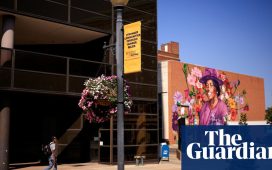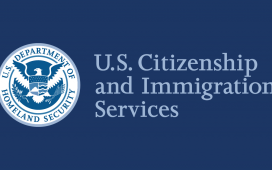Soil is carefully dug and then brushed away and the bags removed from the ground. Inside are bones but also small items that give a touch of humanity and threads of stories where flesh – and names – are missing. A little note. A half-drunk bottle of water. Prayer beads, a soft toy.
These are the items that university experts and students from the Forensic Anthropology Center at Texas State have found when painstakingly exhuming the bodies of migrants who died on their journeys to the United States and ended up in graves at remote county cemeteries on the US-Mexico border.
“At least these bodies were buried with care,” said the forensic anthropologist Dr Kate Spradley, standing above the unearthed gravesite during a recent exhumation. “That is not always the case.”
The project participants brought six body bags up from the ground, representing a tiny number of the thousands who have perished after reaching the border in the last decade.
Whether dying from exposure, thirst or illness in the wilderness as they trekked towards the hope of sanctuary is not always known, but these anonymous people had at least been buried with the meager possessions they had when their bodies were found.

“It’s the personal items that get me,” said Spradley, looking down at the body bags, labeled either Jane or John Doe, the US legal term for those whose identities are protected, such as in court cases or, as in this case, unknown.
“We’ve found handwritten notes, rosaries, Bibles, children’s drawings, prayer cards, snacks and, of course, water,” said Spradley, whose team from Texas State University have recovered more than 300 individual sets of remains in the south Texas borderlands.
Spradley is the director of Operation Identification (OpID), a project that works with governmental and non-governmental organizations to identify migrant bodies found near the Texas-Mexico border in hopes of repatriating their remains to their loved ones who only know that they headed north from mostly South or Central America or Mexico and then disappeared.
The project is attempting to tackle the problem of such deaths, the numbers of which surge and dip over the years and are hard to confirm, but are always distressingly high, and the very patchy systems for recording and dealing with them.
“Alarming numbers of deceased persons have been buried as ‘unknown’ without proper analysis or DNA collection, leaving no hope for identification or repatriation,” according to the project’s mission statement.

Since 1999 at least 7,500 are believed to have died on the southern border, according to data from Customs and Border Patrol (CBP). The Center for Public Integrity estimates that more than 2,000 of the deceased remain unidentified. Deaths are currently increasing.
The Missing Migrants Project, which tracks migrant deaths and disappearances globally, has recorded the deaths of 496 people trying to cross the border from Mexico to the US in 2019, of which 217 were in Texas.
“This is the highest total for border deaths we have recorded in any year since 2014,” said Kate Dearden, project officer for the Missing Migrant Project. She said only 114 people have been identified so far.
“That’s just 23%,” she added.
In the past decade hundreds of bodies have been buried haphazardly by county authorities, placed in unmarked mass graves without analysis or records of their location.
“They were just thrown in. It was a humanitarian crisis,” said Eddie Canales of the South Texas Human Rights Center.
Spradley agreed that earlier exhumations at another cemetery in the area exposed an acute lack of consideration.

“Very little care was taken,” said Spradley. “We would find trash buried with the bodies and trash on top of burials. They were treated like trash.”
Furthermore, the exact number of migrant deaths on the US-Mexico border remains poorly understood, especially as 95% of land on the southern border of Texas is private.
“Discoveries are accidental, so it’s hard to have the numbers,” said Spradley.
While the scope of the problem is daunting, Operation Identification has had limited, but meaningful, success. Since 2013, 36 individuals’ exhumed remains have been identified at their lab in San Marcos, Texas, halfway between Austin and San Antonio.
Returning from Star county’s La Grulla cemetery, where the Guardian had witnessed the recent exhumation of the six body bags containing migrants’ remains, to the project’s lab, Spradley gestured to hundreds of cardboard boxes lined up around the walls.
“This is not easy work,” she said. Each contains remains and personal effects, awaiting identification.
From one box, Spradley removed a luchador’s wrestling mask and a small stuffed lion. In another box, there’s a water bottle, still half-full.

Remains are cleaned and processed. Then any case information and DNA samples are sent to government databases and relevant NGOs in hopes of finding a match with missing person reports from other nations.
Last year a family from Puebla, Mexico, recognized facial reconstruction photos of their loved one on the the National Missing, and Unidentified Persons System, which had been provided by OpID. They went through a complicated process to have their DNA samples taken and sent to Spradley’s lab, and a match and identity eventually emerged.
The migrant was a deceased woman in her late twenties who had several small children.
Canales of the South Texas Human Rights Center is involved in trying to ensure people don’t end up as one of those statistics.
Accompanying him on a drive through some of the 50,000 dry, scrubby acres of a ranch near the south-eastern end of the US-Mexico border in Texas, Canales explained that there is no official system to search for and retrieve migrants’ bodies, especially outside public lands.
“Most of the border in Texas is private land like this,” he said. He was heading out in his pickup to refill an informal water station to help those trekking through the vast, confusing border-area landscape.

Since 2012 Canales has set up 170 local water stations, in hopes of saving migrants passing through the Brooks county area, where about 700 bodies have been found over the past decade. Canales believes that number is an undercount.
“For every body found there are many more that never will be,” he said, stepping out of the truck to refill large blue barrels using a gallon jug. The barrels are placed near landmarks – a road, a clearing, a spot of shade – in the otherwise dense brushlands of south Texas.
Canales has fielded hundreds of calls from distressed family members of missing migrants. Some relatives even end up managing to come to the US to reclaim their loved ones’ remains and preserved belongings. He said the impact of knowing cannot be overstated.
“When they viewed the whole skeletal remains, there were still doubts. But the personal effects did it,” said Canales, referring to a case in which there was a handwritten note that a sister remembered writing to her now deceased sibling. “Then, the family got closure.”
While Spradley acknowledges that this kind of closure is denied to many, every identification is a small achievement. A scrap of humanity restored. A number turned back into a name.








